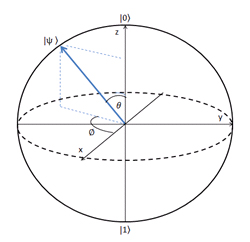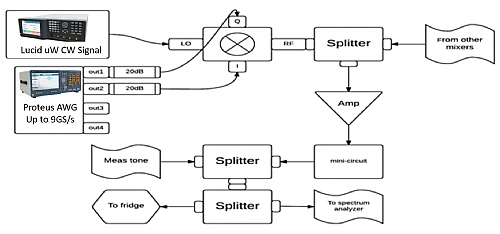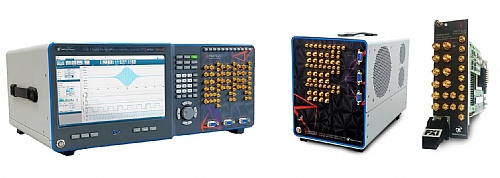Relevant Documents
 (233KB)
(233KB)
Background
In quantum computing, a qubit or quantum bit is a unit of quantum information. A qubit is a two-state quantum-mechanical system and is the quantum analogue of the classical bit. In a classical system, a bit would have to be in one state or the other. However, quantum mechanics allows the qubit to be in a superposition of both states at the same time.
The possible states for a single qubit can be visualized using a Bloch sphere (see figure 1). Represented on such a sphere, a classical bit could only be at the "North Pole" or the "South Pole", in the locations where I0> and I1> are respectively. The rest of the surface of the sphere is inaccessible to a classical bit, but a qubit state can be represented by any point on the surface or inside of it.

Figure 1: Bloch sphere representation of a qubit
In the quantum information community, the Bloch Sphere plays a unifying role, because all qubits can be represented this way, no matter how they are practically realized. The most well-known two-level system is the spin^(-1⁄2) particle and other systems are frequently mapped on the spin^(-1⁄2) for better intuition.
A general pure state of the qubit can be written in the form:

Requirement
There are various types of experiments performed in the field of controlling quantum bits, as one experiment can be significantly different from another. Therefore, we will explain in general a common set up for a superconducting qubit experiment. We will focus on the AWG part of the experiment set up:
Qubit rotations (on the Bloch sphere) are generated using a wideband I-Q modulated microwave signal generator. The control voltages applied to I and Q entries of a mixer, are generated using two of the four available channels of the Tabor P2582M, using the other two channels, one can create a gate pulse for a RF scalar generator for measurement pulses and additional clock signal for synchronization, which can set the repetition rate of the whole experiment. Each experiment has its own needs so channel 3 and 4 could be for other uses and in addition, there could be a demand for using the Tabor P2582M’s markers as well.
Precise generation of microwave pulses at room temperature is required for high fidelity qubit control. Broadly speaking, microwave pulse generation is done by modulating the amplitude of a CW microwave tone provided by the Lucid LS1290 Family of Signal Generators in time with voltages (pulses) provided by the Tabor P2582M.
The heart of the pulse modulation scheme is the microwave I-Q mixer. An ideal mixer’s RF output should be proportional to the instantaneous low-frequency (DC to a few hundred MHz) voltage on the modulation ports produced by the P2582M.

Figure 2: Typical mixer assembly scheme
Solution
There is no unit on the market in this price range that can outperform the
Tabor Electronics Proteus P2584 family of Arbitrary Waveform Generator featuring:
- 2/4 single ended/differential independent or synchronized output channels.
- Max 9GS/s sample clock rate.
- Up to 9GHz bandwidth.
- 16 bits of vertical resolution.
- Max amplitude of 1.2Vp-p.
- Multiple instrument synchronization.
- Controllable Channel delay and Skew resolution.
- Extremely low noise and excellent spectral purity.
- Up to 16GS of waveform memory.
- Additional up to 16 marker outputs.


Figure 3: The Tabor Proteus Family
Tabor’s Proteus series goes beyond Arbitrary Waveform Generation, as the world’s first Arbitrary Waveform Transceiver. The system integrates the ability to transmit, receive and perform digital signal processing all in a single instrument.
The Proteus series has a PXIe module, desktop or benchtop platforms. The modular, compact and cost effective system offers industry leading performance, various configuration options, an innovative task oriented programming, and user programmable FPGA. So whether it is for Physics, aerospace and defence, telecommunications, automotive or medical. Proteus is the right solution for your project.
Experiment design considerations for real-time, closed-loop pulse streaming
For More Information
To learn more about Tabor’s solutions or to schedule a demo, please contact your local Tabor representative or email your request to [email protected].